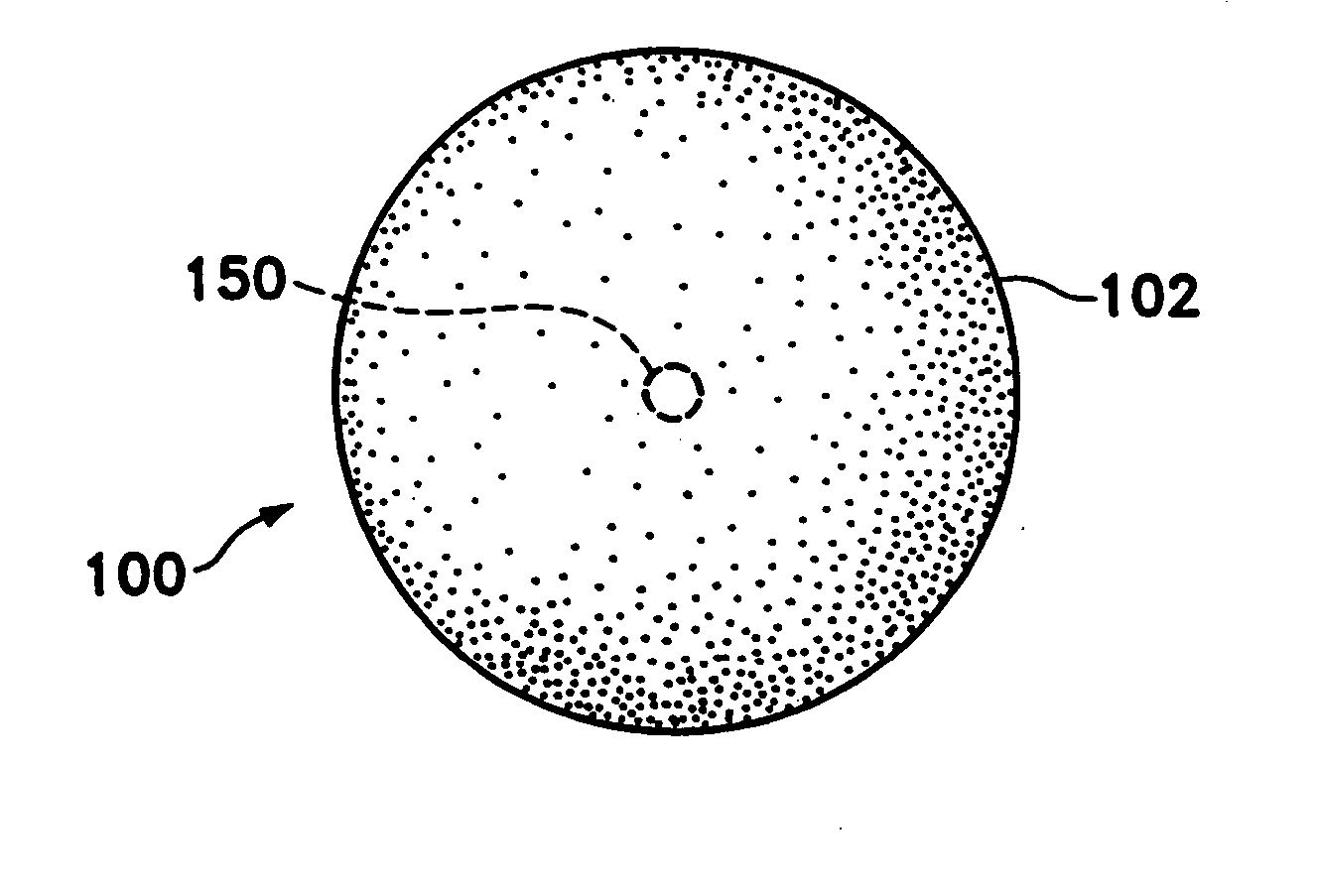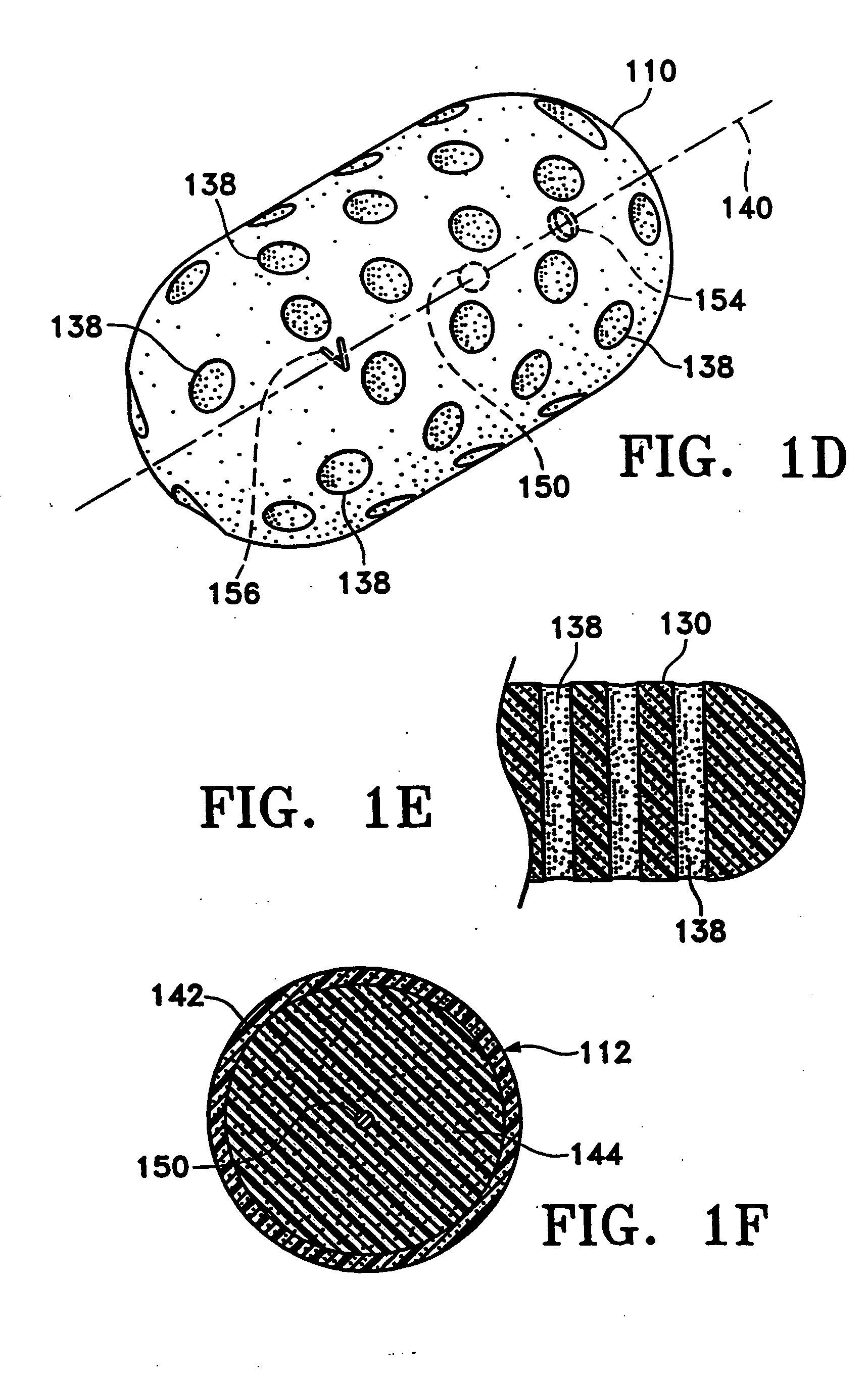Biopsy site marker
a biopsy site and marker technology, applied in the field of subcutaneous cavity marking devices and methods, can solve the problems of clip detachment from the cavity wall, device has significant drawbacks, initial biopsy failed to remove a sufficient amount of lesion, etc., and achieve the effect of minimizing any “dimpling effect”
- Summary
- Abstract
- Description
- Claims
- Application Information
AI Technical Summary
Benefits of technology
Problems solved by technology
Method used
Image
Examples
Embodiment Construction
[0047]FIGS. 1A-1C show various configurations of a preferred subcutaneous cavity marking device of the present invention. Here the marking device (100) is displayed as having either a generally spherical body (102) (FIG. 1A), a generally cylindrical body (104) (FIG. 11B), or a multi-faced or irregular body (106) (FIG. 1C). In general, it is within the scope of this invention for the body to assume a variety of shapes. For example, the body may be constructed to have substantially curved surfaces, such as the preferred spherical (102) and cylindrical (104) bodies of FIGS. 1A and 1B, respectively. The body may have conical or ellipsoidal, etc., shapes as well. It is further within the scope of this invention for the body to have substantially planar surfaces, such as polyhedric (i.e., cubic, tetrahedral, etc.) or prismatic, etc., forms. Finally, the body may also have an irregular or random shape, in the case of a gel, combining features of various curved and planar surfaces. Body (10...
PUM
| Property | Measurement | Unit |
|---|---|---|
| resilient | aaaaa | aaaaa |
| radiopaque | aaaaa | aaaaa |
| frequency | aaaaa | aaaaa |
Abstract
Description
Claims
Application Information
 Login to View More
Login to View More - R&D
- Intellectual Property
- Life Sciences
- Materials
- Tech Scout
- Unparalleled Data Quality
- Higher Quality Content
- 60% Fewer Hallucinations
Browse by: Latest US Patents, China's latest patents, Technical Efficacy Thesaurus, Application Domain, Technology Topic, Popular Technical Reports.
© 2025 PatSnap. All rights reserved.Legal|Privacy policy|Modern Slavery Act Transparency Statement|Sitemap|About US| Contact US: help@patsnap.com



